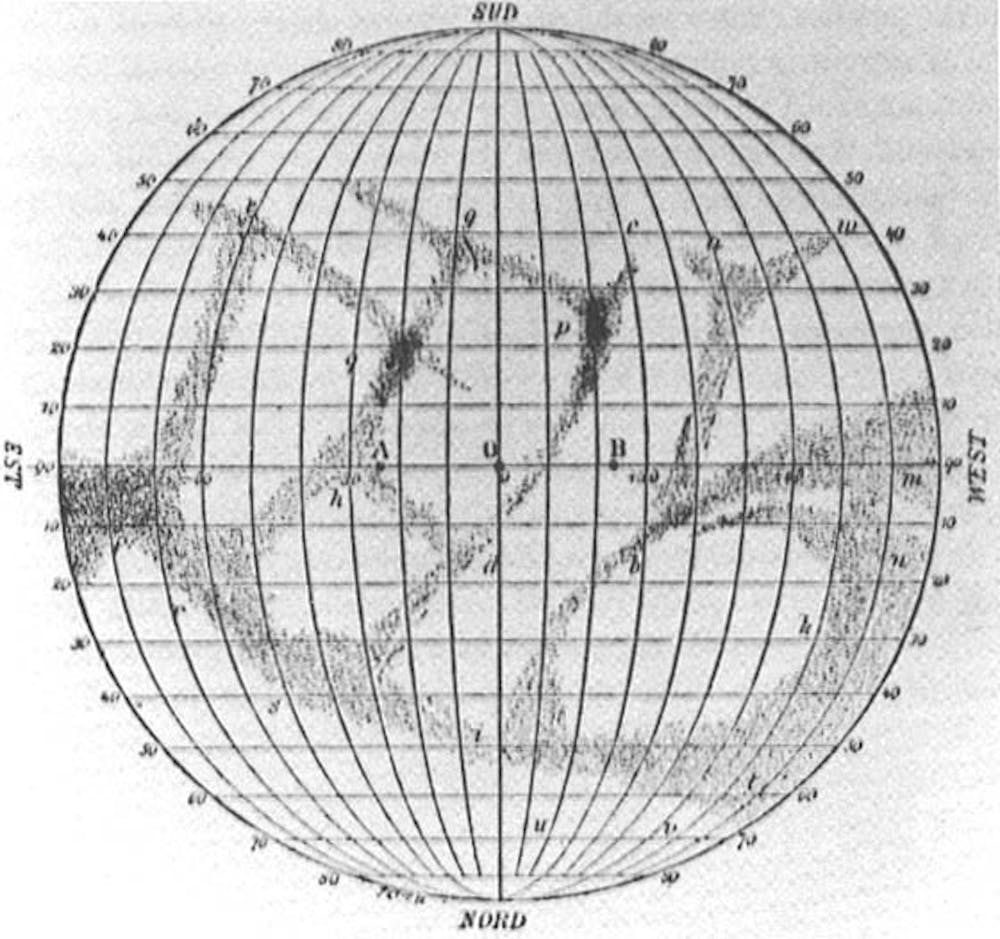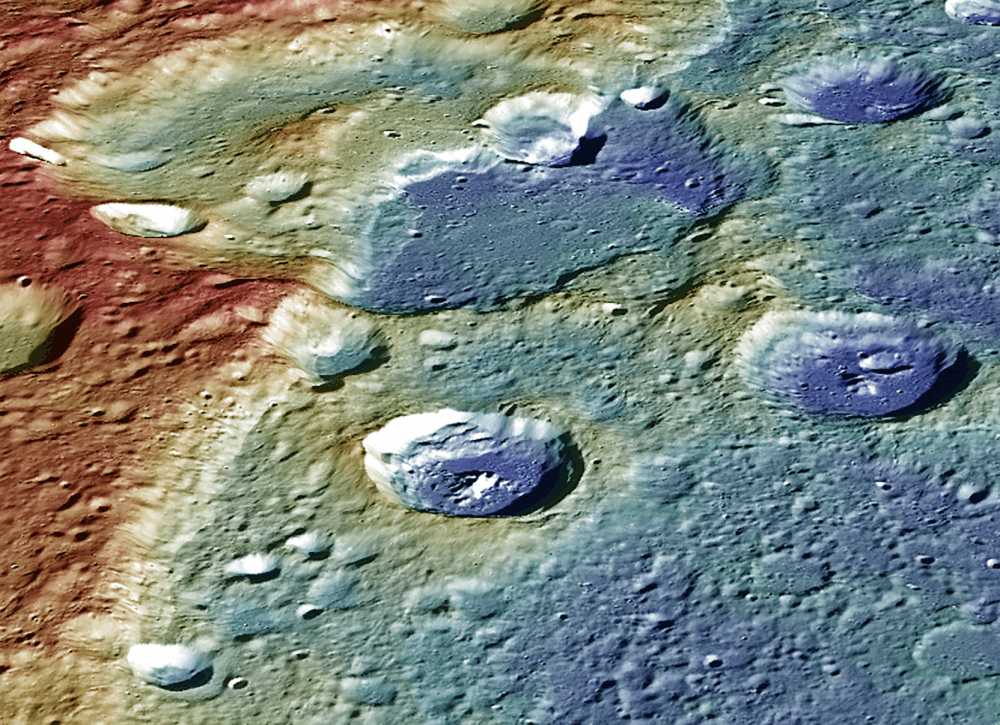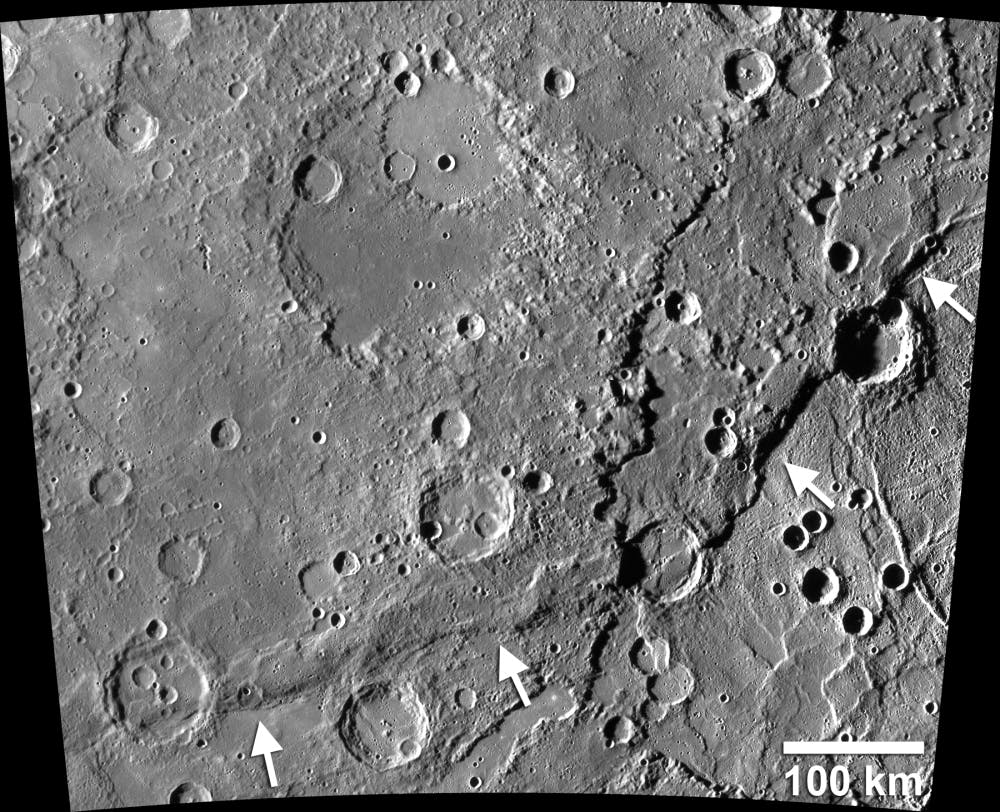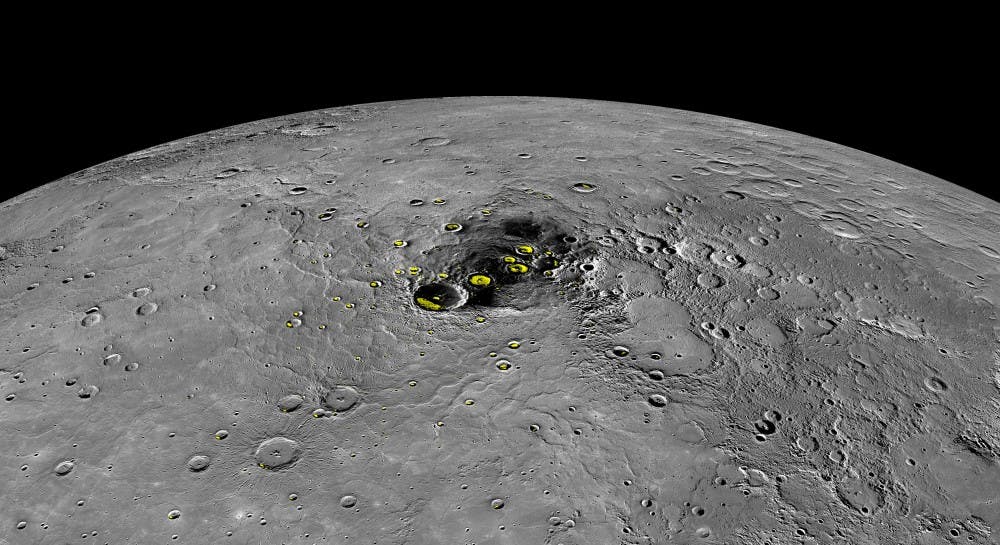Thirty-six million miles from the Sun simmers a ball of rock and iron that, for the past four billion years, has been shrinking. But before we get into the contraction of its mantle, we must first look at Mercury’s history.
Ancient astronomers knew of seven objects that shone brightly in the sky and could move freely. Naturally, the wandering stars, (“planetes asteres” if you’re Greek) were named after the gods. They named the slowest god Saturn, the brightest god Jupiter, and ruddy Mars was named after the god of war. The Sun, which at this point was still thought to orbit Earth, was named Sol, and its counterpart was named Luna. Beautiful Venus was named for the goddess of love and could be seen in the daytime. The last known planet moved the fastest and remained the closest to the Sun. It was therefore named for the quick-footed messenger to the gods, Mercury.
Due to its close proximity to the Sun, not much was know about Mercury and its surface until the coming of the Space Age. At its furthest, Mercury is visibly no more than 28º from the Sun and still well within the sky’s twilight. This makes telescopic observing difficult because the turbulent atmosphere impairs the sharpness of surface details.
Another difficulty is the slow rotation of the planet. It is locked in a resonance with the Sun and rotates three times for every two orbits. Astronomer Giovanni Schiaparelli in particular had difficulty with mapping the surface of Mercury. The rotational period of Mercury was not known until radar telescopes could bounce signal off of the surface and record the slight shift in returning signal, so when Schiaparelli saw the same fuzzy patches on Mercury’s surface over subsequent observations, he assuming it to be tidally locked and tacitly orbiting. He did not know that the 3:2 resonance caused the same spot to be in view at similar times, only during every other orbit. Regardless, it held true for another hundred years until the radio telescope in Arecibo, Puerto Rico confirmed the 59-day rotation.

Schiaparelli’s surface map of Mercury, 1880s
In modern times, we have a far better understanding of Mercury, though it is still the least-understood planet. This stems from ground-based difficulties discussed above but also has a large part to do with lack of visitation. There have been only two missions to the innermost planet, Mariner 10, which ran out of fuel in 1975 but is still thought to be orbiting near Mercury, and MESSENGER probe which ended its 10-year mission in 2015 after it impacted the surface.

A MESSENGER topographic photo of Carnegie Rupes showing the scarp dissecting an older crater.
Something that both the Mariner and MESSENGER missions have shown is that Mercury has a density of 5.427 g/cm³, nearly as dense as Earth’s 5.514 g/cm³, though Mercury is 5.6 percent the volume of Earth. The extra mass comes from Mercury’s massive core. Earth’s core makes up 17 percent of its total volume, whereas Mercury’s core is 55 percent its total volume, the highest core-to-radius ratio in the solar system. In fact, Mercury has the highest iron content of any planetary core. Mercury’s high density makes its surface gravity slightly higher than that of Mars, though being only 37 percent of Mars’ volume.
When a planet accretes from the solar nebula, the bits of minerals and gas are still quite warm. Throughout time, planets lose their heat to space and, much like a balloon dunked in liquid nitrogen, shrink. On a body like Mercury, this causes complications. The substantial core is still in the process of cooling, and iron conducts heat much better than silicate rocks do. This leaves a quickly cooling interior shrinking under and less-rapidly cooling surface. When this happens, the unsupported crust contracts upon itself, resulting in long cliffs and thrust faults all along the surface. The cliffs are called escarpments, or scarps, and signify ancient and ongoing geological activity.

Enterprise Rupes, the largest lobate scarp on Mercury at about 1000km long and 3km high (courtesy of NASA via MESSENGER)
It has been long thought that Earth is the only geologically active planet but the discovery of the planet-wide scarps on Mercury added another to the list. While many of the larger cliffs are eons old, cutting through existing craters and lava-filled basins, much of the smaller scarps are thought to have been formed in current processes. To be sure, the contractions have shifted the crust by about 7km throughout the history of the planet. Much of the alterations happened within a billion years of formation, when the core and mantle were still rapidly cooling.
Most people, myself included, think of Mercury as a rock that alternates between broiling heat and frigid cold as the planet rotates. In mid-afternoon, surface temperatures approach 700K, well above the boiling point of water. However, deep craters on the poles leave water in permanent shadows which keeps the crater around 100K, well below the freezing point of water. Even on the first rock from the Sun, water finds a way. And sometimes that way is meteoric impact.

Mercury’s north pole with water ice highlighted in yellow (courtesy of NASA via MESSENGER)






